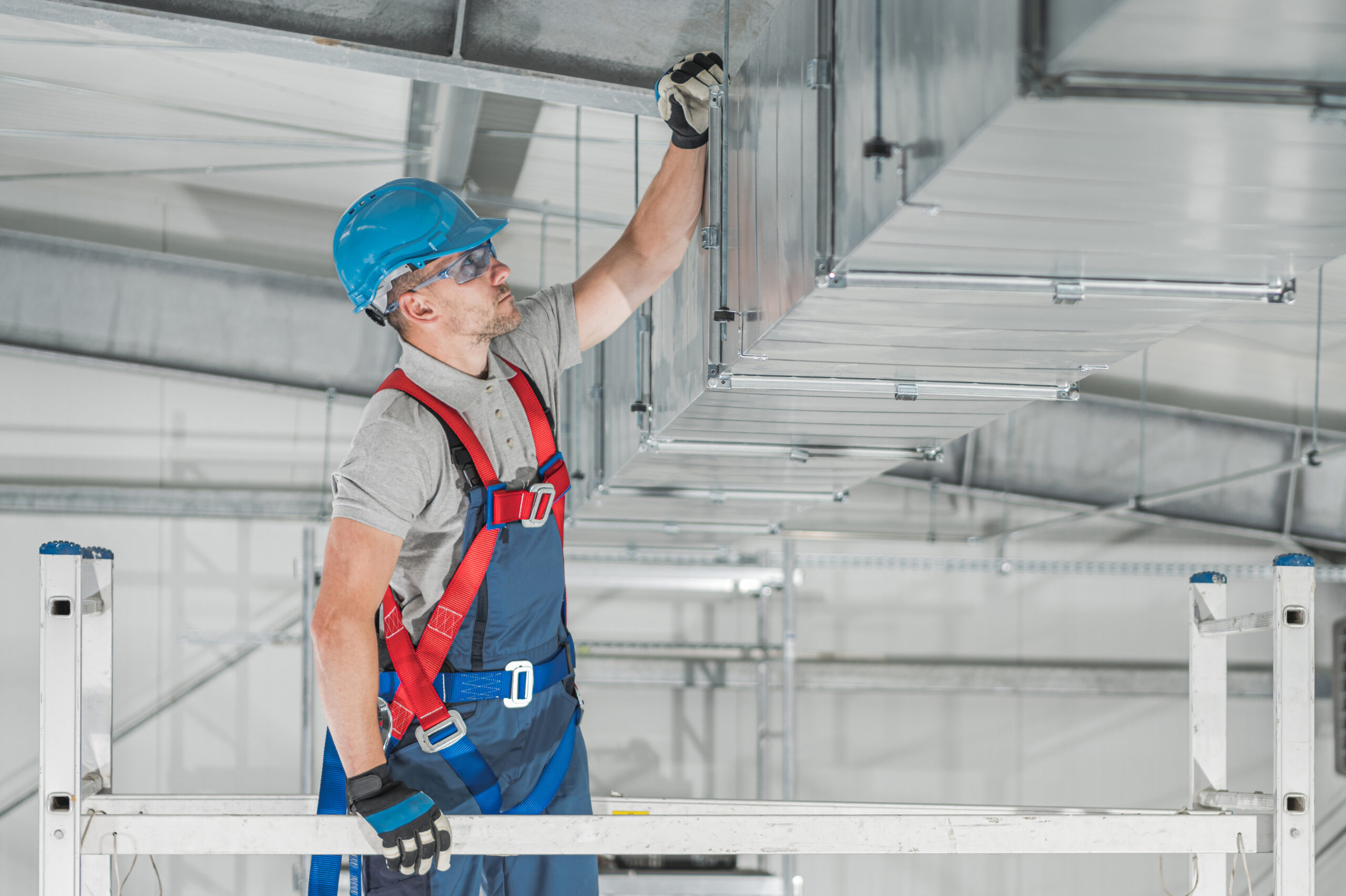Get the scoop on commercial solutions that can save real dollars and cents.
One of the most common questions is what options are available o the market. Which options make the most sense for each building type. And what some of the advantages and disadvantages of each.
Let’s dig in.
What Types of Commercial HVAC Systems Exist?
Commercial HVAC systems come in various styles, with different energy efficiency ratings, different heating and cooling capacities, and different types of controls. This blog post will describe the various types of commercial HVAC systems that can be used for your business, along with the features and benefits of each type.
What should you consider when shopping for an HVAC system for your commercial building?
The heating system is the most critical factor to consider when selecting a new HVAC system for most buildings. The size and shape of your building and the number of rooms/spaces will influence the type of HVAC system that is right for your facility.
The climate in your area will determine what kind of commercial HVAC system is best for your business. Other considerations include your budget and how long you expect the system to last.
HVAC SYSTEM BASICS
Before we jump into system types, advantages, and disadvantages, let’s take a quick look at the basics of an HVAC system to round out our understanding. In brief, there are five main components/features of an HVAC system. These include:
- Furnace: Furnaces are the most efficient and reliable HVAC systems for heating. They are designed for larger commercial buildings, and they work well for spaces where heating and cooling are required.
- Heat Pumps: Heat pumps are a great solution for any climate. They’re ideal for cooling, but they also work for heating.
- Heat pumps are the most energy-efficient heating systems available.
- Cooling: Air-source heat pumps are the most efficient way to cool a building. They use the outside air as a source of heat, which is transferred to the inside of the building.
- Humidifiers: Humidifiers are used to help reduce the dryness and discomfort caused by air conditioning.
- Air Conditioning: The most common commercial HVAC system is an air conditioning system. It is also the most expensive.
Commercial HVAC System Types, Advantages, and Disadvantages
There are several types of systems that you can choose from when it comes to HVAC. This is the main reason why it is so important to make the right decision. Choosing the right HVAC system for your building can save you money and help your business run more smoothly.
There are different types of HVAC systems, such as a single split system, multi-split system, VAV system, and a VRF system. Therefore, when you choose the right HVAC system for your business, it is essential to consider all the involved factors at play.
As we’ve outlined, there are many different types of heating, ventilation, and air conditioning systems. So how do you know which one to choose? Here’s how to make this critical decision.
Single-split System
Single split systems have one compressor, evaporator coil, furnace, and refrigerant. They’re the most cost-effective, reliable, and energy-efficient heating and cooling solution for smaller commercial buildings.
This system is not designed for large buildings with multiple rooms.
Multi-split System
A multi-split system works much like a single system, except that multiple indoor units connect to a single outdoor unit. As a result, it’s best for larger commercial properties but not suitable for small ones.
Variable Air Volume (VAV)
Variable Air Volume (VAV) systems control room temperatures by varying airflow. They are ideal for multi-room spaces because they can independently heat and cool each room.
Small offices can benefit from VAVs. They’re not designed for them, but they can work in small spaces.
Variable Refrigerant Flow (VRF)
VRF is a heating and cooling system that uses a refrigerant as a heating and cooling medium. VRF systems move the refrigerant to the zone within a building that needs to be heated or cooled and is highly effective and energy-efficient.
This machine isn’t designed for larger assembly spaces, but it still makes a great addition to your production line.
Constant Air Volume (CAV)
CAVs are ideal for large spaces with lots of open areas and few windows. They’re also ideal for spaces where the temperature needs to be regulated and where the space is subject to a lot of outdoor activity, such as exhibition halls.
Heat Pump
A heat pump system is a good choice for any setting where heating and cooling are needed. For example, heat pumps can be used in schools, sports facilities, and other settings where heat is required.
A heat pump is not designed for colder climates with temperatures below 40 degrees.
MAKE YOUR HVAC SYSTEMS MORE EFFICIENT AND SAVE MONEY
If you’re interested in learning how to make your business’s HVAC system run more efficiently, tenure you have the latest, most efficient equipment, or get a better understanding of how to improve operations, give us a shout at [email protected].



